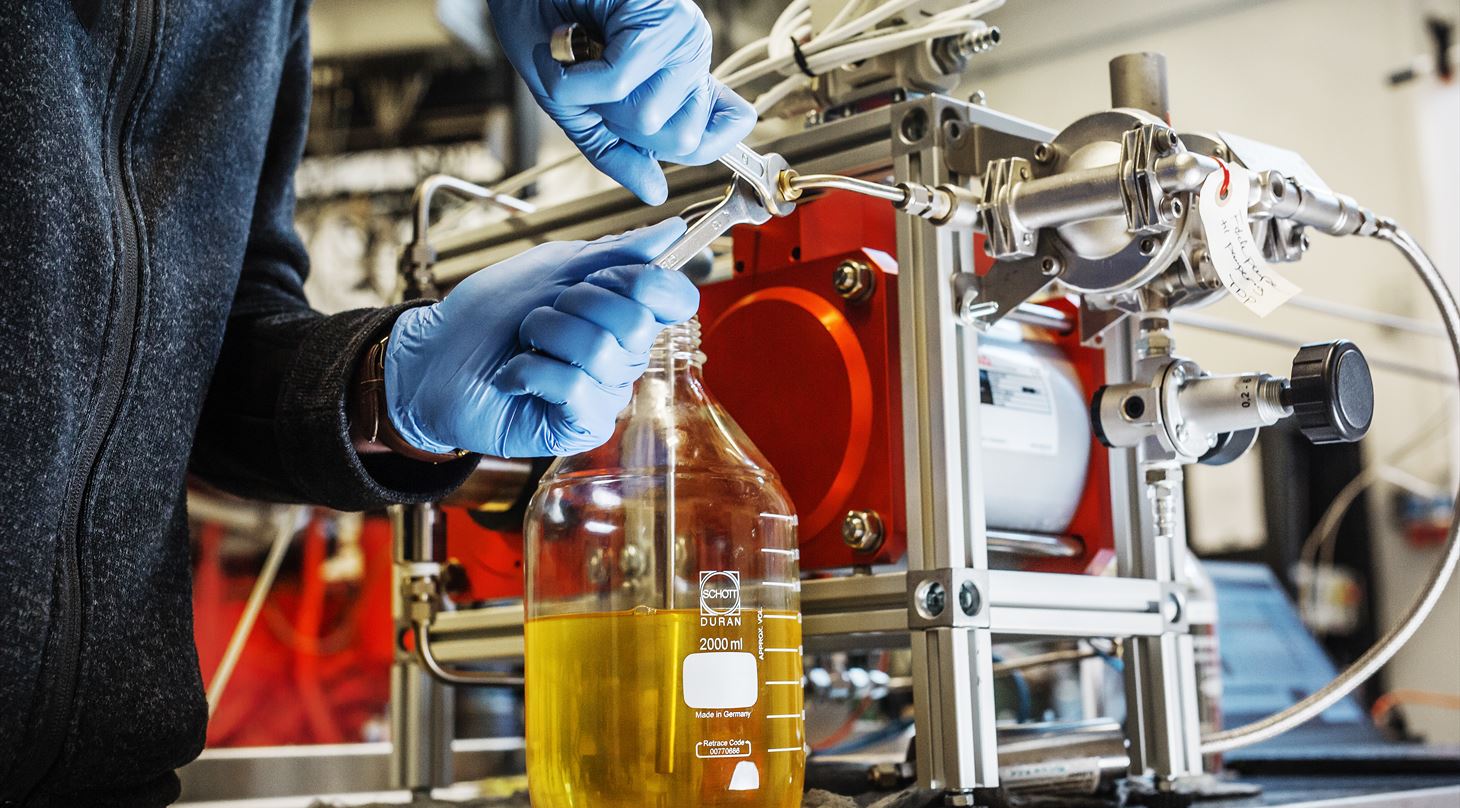
Development of Cracking Technology
At AFLOAT, we add hydrogen to ammonia to improve its combustion properties. However, since hydrogen must be stored either under high pressure or at extremely low temperatures, it is difficult to store in large quantities on board a ship. Therefore, we are developing technologies that can “crack” ammonia - that is, split it to produce hydrogen directly on board.
The core of this solution is the cracker itself - a heat exchanger equipped with an internal catalyst layer. In this unit, ammonia is split into hydrogen and nitrogen through heat and catalysis. The resulting hydrogen can then be blended with ammonia and used as an optimized fuel in either the engine or the boiler.
The development of the catalyst and the cracker is carried out in close collaboration between materials scientists, process engineers, and marine technologists to ensure that the finished solution is optimally effective and reliable in real-life operation.
Catalyst Development
A major challenge is that the most effective catalysts for ammonia splitting have traditionally relied on rare and very expensive precious metals like ruthenium. At AFLOAT, we are therefore actively developing and testing catalysts based on more abundant metals, such as cobalt and iron - without compromising on efficiency, durability, or resistance to the water content present in ammonia used as fuel.
Design and Testning af the Cracker
In parallel, we are developing the cracker itself so that the heat exchanger and catalyst are fully integrated, ensuring the unit can operate stably, safely, and efficiently under the demanding conditions found on modern ships. The cracker must deliver high efficiency across different loads and temperatures, be resistant to corrosion, and be designed to fit the physical constraints and safety requirements of a maritime setting.
Preliminary Results
New catalyst delivers efficient hydrogen production from ammonia - even at low temperature
Within AFLOAT, an entirely new cobalt-based catalyst, enriched with barium, has been developed for ammonia splitting. Notably, this catalyst delivers a high hydrogen yield even at lower temperatures (e.g., 450°C), making the cracking process both easier and less energy-intensive. The catalyst matches the effectiveness of some of the most expensive catalysts on the market, which are typically made from rare metals such as ruthenium.
Read more in Energy & Environmental ScienceThe catalyst remains active even in the presence of water
In practice, ammonia often contains small amounts of water, which usually hampers catalyst performance. DTU has tested the new cobalt-based catalyst under these conditions and found that it remains highly active - unlike most conventional catalysts, which experience significant performance drops. This water tolerance is a major advantage for practical hydrogen production, as it requires fewer purification steps, reduces costs, and lowers system complexity. The results demonstrate that the catalyst is not only effective, but also robust and ready for application in real-world systems.
Read more in ACS Energy Letters1 kW-scale cracker technology delivers promising results
The AFLOAT project has successfully tested first-generation ammonia crackers at the 1 kW scale using established technology supplied by Alfa Laval and modified in collaboration with DTI. These units utilize commercially available ruthenium-based catalysts to split ammonia into hydrogen and nitrogen at high temperatures. Test results show high conversion efficiency with up to 97% ammonia conversion under laboratory conditions. The prototype has been systematically evaluated across various operating parameters to optimize performance and establish benchmark data for further development.
This successful 1 kW-scale test represents a significant milestone, providing valuable operational experience and benchmark data. The results achieved with conventional ruthenium catalysts will serve as a reference for evaluating expected improvements from the project’s innovative cobalt-based catalyst in next-generation designs.
The synergy between Alfa Laval’s industrial expertise and DTI’s technical modifications of established solutions has been crucial to achieving these promising outcomes, laying a strong foundation for integrating the new catalyst technology developed by DTU Physics